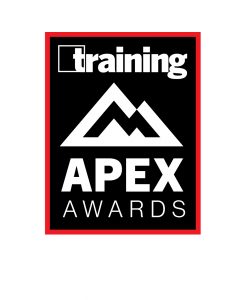
Historically, Edward Jones’ financial advisor onboarding training had been a structured 17-week program completed in a specific order with strict performance expectations, but feedback showed financial advisors felt the program no longer fit their professional lifecycle.
So in 2021, Edward Jones made its financial advisor onboarding training more self-directed. The new Establish Your Practice (EYP) program allows financial advisors to gain both knowledge and experience in four independent online learning modules as they begin managing their individual offices and assets for real clients. This training is targeted at new financial advisors but impacts all branch-team associates as financial advisors work as a team with their branch office administrators in growing client relationships.
Program Details
The impetus for the new EYP onboarding training grew out of the firm’s “A Plan for Every Financial Advisor” strategy, which calls for every financial advisor to receive assets at the start of their practice. Starting out with assets increases the probability that new financial advisors succeed, but it also demands that they quickly skill up on client service training.
Choosing the order of study and implementation based on their own needs, the financial advisors work through regulatory, client service, and business development topics at their own pace. The participants attend topic kickoffs and closing workshops every six to eight weeks. The first session is designed for learning, and the second encourages them to share and learn from their colleagues.
EYP is the second six-month segment of financial advisors’ first-year onboarding. It is the capstone of the company’s required education. Four learning paths were developed for the new autonomous capstone program. Each starts with a virtual instructor-led course. Financial advisors then work through materials at their own pace, using it in their own unique book of business. Support is available from instructors and other participants, most of whom were together for the initial six-month introductory courses.
They close the unit with another instructor-led workshop, this time focused on applying the knowledge gained and sharing real-world experiences to leave the cohort with new ideas.
Weekly check-ins with field trainers provide immediate and ongoing reinforcement of training during the program. Financial advisors stay with the same cohort throughout their training, making strong connections that many use as sounding boards and to reinforce best practices going forward. Two cohorts from EYP continue on together as they complete the next class in their onboarding, Purpose Driven Practice. They also transition from working with field trainers to level leaders in their respective regions, who continue to reinforce lessons learned in EYP.
Results
The business goal of reducing financial advisor attrition among first-year financial advisors by at least 1 percent was met. In a year during which the U.S. Bureau of Labor Statistics recorded its all-time highest quit rate, the attrition among financial advisors in the Edward Jones Establish Your Practice training program went down slightly: The 12-month attrition rate for new financial advisors was 19.8 percent for July 2021 to June 2022 vs. 21.9 percent from October 2020 to September 2021.



